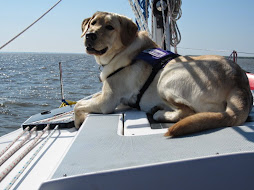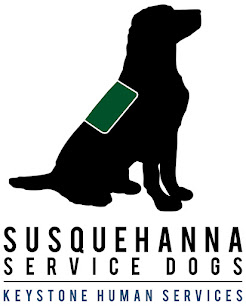It’s the moment some people have been waiting for. They’ve been waiting for one, two, three or more years.
It’s the moment they get to meet the dog who may become their service dog.
Two weeks ago, six people who have been on our waiting list met several of the dogs currently in advanced training. At our Meet the Dogs sessions, individuals meet several dogs to find a good match for their needs and personality. We take matching people with the dogs very seriously. The dogs and their partners will be working together for the next 8-10 years, and we want to make sure they can not only work together but also form a lasting bond.
At our Meet the Dogs sessions, each person spends 1 ½ to 2 hours with us. During that time, we go over their application, asking lots of questions. We ask so many questions and ask for many details because once a person is matched with a dog, we will specially train that dog for their unique needs. In order to do that successfully, we need to know things such as which side the person prefers the dog to walk on, whether the dog will need to pull a wheelchair, what type of doors the dog may need to open, and what type of retrieves the dog may be doing, among many other things. Then, when we’re training the dogs, we try to recreate the environment in which the dog will usually be working. For example, one person requested that her dog be able to turn her touch lamp on and off. To make sure that the dog will be able to perform this behavior in the person’s home, we asked her to send us a picture of the lamp and the area around it, including the floor, table and ceiling, so we could recreate the scene as accurately as possible.
Once we learned as much as we could about the person’s specific needs, it was time to meet the dogs: SSD Barely There, Coriander, Gnat, Lil, Mite, Sonora, Midge and Pearl. Each person met several dogs out of this group. When we bring a dog out, we walk him over to the person and give them time to hang out and greet each other. Then we take the dog about 20 feet away, and the person must give the dog a series of cues, clicking and treating the dog when he performs them. First, the person calls the dog to “come,” then “come, sit” and finally “come, down.” The person and dog get more time to hang out together, and then they go for a short walk. Each person goes through this process with several dogs and ranks the dogs according to how much they liked them and how well they think they’ll be able to work with them.
We love the moments when the people actually meet the dogs! It’s a special time to see the reactions of both the people and the dogs. Barely There trotted right over and gave kisses. Gnat trotted over, gave kisses, and then promptly turned his back, asking for his butt to be scratched. Lil was a little lady, sitting or standing calmly while she was petted, while Sonora was a ball of energy prancing around the person for attention. Midge, affectionately known as “The Tongue” because she loves to give kisses, licked whatever part of the person she could reach. Each dog greeted each person in their own way, with their own distinct personality.
Not only does the person choose the dog, but the dog chooses the person. The same dog will react to different people in different ways. For example, SSD Lil, a beautiful black lab, went right over to one person and gave him her complete attention, moving closer to him as he petted her. When it was time for her to go back to her crate, she kept looking back at him as if she didn’t quite want to leave. With another person, however, Lil’s attention wandered. Instead of coming almost immediately when called, she trotted over to investigate an interesting smell by the wall before walking to the person, and she didn’t seem quite as eager to be petted. Just as each person has a distinctive personality and gets along better with some people, each dog has an individual personality that makes them better suited for certain people. Lil’s reaction to different people is just one example of a dog behaving differently with each person. The dogs began forming bonds with different people, and it’s this bond – with the person and the dog choosing each other – that we look and hope for. It is this bond that makes a good team and loving companions.
Besides the bond between person and dog, there are several factors that contribute to making a match. For example, if a person needs the dog to pull their wheelchair, we must make sure the dog’s bone and joint structure is sound so the dog is capable of safely pulling the wheelchair. Most important, however, is the person’s choice of which dog they prefer. Once we match people with the dogs, those dogs will be individually trained for their partner’s needs. The dogs that are matched from this Meet the Dogs will go through Team Training with their partners in February.
This is such an exciting time for SSD and for the people who may soon be matched with their service dog! We wish each person and the dogs good luck as they continue their journey to becoming partners and companions!
Wednesday, September 9, 2009
Subscribe to:
Post Comments (Atom)









good luck to all involved!
ReplyDeleteIt was a little like speed dating. I had watched my son go through it twice and he was exhausted by the end of it. Somehow it still surprised me how exhausted I was when it was my turn to meet the dogs. It was very exciting and I can hardly wait for team training but I sure was tired at the end of that day.
ReplyDeleteI can't wait until it is my turn!
ReplyDelete